Mutual Inductance and Coupling Effects in Acoustic Resonant Unit Cells
Abstract
:1. Introduction
2. Model Analysis
3. Results and Discussion
3.1. Tunable Dumbbell-Shaped Split Hollow Sphere (DSSHS) Acoustic Metamaterial (AMM) with Negative Modulus
3.2. Broadband DSSHS AMM
3.3. Transmitted Acoustic Metasurface with DSSHS
4. Conclusions
Author Contributions
Funding
Conflicts of Interest
References
- Smith, D.R.; Pendry, J.B.; Wiltshire, M.C.K. Metamaterials and negative refractive index. Science 2004, 305, 788. [Google Scholar] [CrossRef] [PubMed]
- Veselago, G.; Narimanov, E.E. The left hand of brightness: Past, present and future of negative index materials. Nature Mater. 2006, 5, 759. [Google Scholar] [CrossRef] [PubMed]
- Zhao, X.P. Bottom-up fabrication methods of optical metamaterials. J. Mater. Chem. 2012, 19, 9439. [Google Scholar] [CrossRef]
- Gómez-Castaño, M.; Zheng, H.; García-Pomar, J.L.; Vallée, R.; Mihi, A.; Ravaine, S. Tunable index metamaterials made by bottom-up approaches. Nanoscale Adv. 2019, 1, 1070. [Google Scholar] [CrossRef]
- Liu, Y.M.; Zhang, X. Metamaterials: A new frontier of science and technology. Chem. Soc. Rev. 2011, 40, 2494. [Google Scholar] [CrossRef] [PubMed]
- Liu, H.; Zhao, X.P.; Yang, Y.; Li, Q.; Lv, J. Fabrication of infrared left-handed metamaterials via double template-assisted electrochemical deposition. Adv. Mater. 2008, 20, 2050. [Google Scholar] [CrossRef]
- Molet, P.; Garcia-Pomar, J.L.; Matricardi, C.; Garriga, M.; Alonso, M.I.; Mihi, A. Ultrathin Semiconductor Superabsorbers from the Visible to the Near-Infrared. Adv. Mater. 2018, 30, 1705876. [Google Scholar] [CrossRef] [PubMed] [Green Version]
- Zhao, X.P.; Luo, W.; Huang, J.X.; Fu, Q.H.; Song, K.; Cheng, X.C.; Luo, C.R. Trapped rainbow effect in visible light left-handed heterostructures. Appl. Phys. Lett. 2009, 95, 071111. [Google Scholar] [CrossRef]
- Yu, N.; Genevet, P.; Kats, M.A.; Aieta, F.; Tetienne, J.P.; Capasso, F.; Gaburro, Z. Light propagation with phase discontinuities: Generalized laws of reflection and refraction. Science 2011, 334, 333. [Google Scholar] [CrossRef]
- Grady, N.; Heyes, J.; Chowdhury, D.R.; Zeng, Y.; Reiten, M.; Azad, A.; Taylor, A.; Dalvit, D.; Chen, H. Terahertz Metamaterials for Linear Polarization Conversion and Anomalous Refraction. Science 2013, 340, 1304. [Google Scholar] [CrossRef]
- Yu, N.; Capasso, F. Flat optics with designer metasurfaces. Nature Mater. 2014, 13, 139. [Google Scholar] [CrossRef] [PubMed]
- Liu, Z.Y.; Zhang, X.; Mao, Y.; Zhu, Y.Y.; Yang, Z.; Chan, C.T.; Sheng, P. Locally resonant sonic materials. Science 2000, 289, 1734. [Google Scholar] [CrossRef]
- Assouar, B.; Liang, B.; Wu, Y.; Li, Y.; Cheng, J.; Jing, Y. Acoustic metasurfaces. Nat. Rev. Mater. 2018, 3, 460. [Google Scholar] [CrossRef]
- Yang, Z.; Mei, J.; Yang, M.; Chan, N.H.; Sheng, P. Membrane-Type Acoustic Metamaterial with Negative Dynamic Mass. Phys. Rev. Lett. 2008, 101, 204301. [Google Scholar] [CrossRef] [Green Version]
- Fang, N.; Xi, D.; Xu, J.; Ambati, M.; Srituravanich, W.; Sun, C.; Zhang, X. Ultrasonic metamaterials with negative modulus. Nature Mater. 2006, 5, 452. [Google Scholar] [CrossRef]
- Yang, M.; Ma, G.C.; Yang, Z.Y.; Sheng, P. Coupled Membranes with Doubly Negative Mass Density and Bulk Modulus. Phys. Rev. Lett. 2013, 110, 134301. [Google Scholar] [CrossRef] [Green Version]
- Cummer, S.A.; Christensen, J.; Alu, A. Controlling sound with acoustic metamaterials. Nature Rev. Mater. 2016, 1, 16001. [Google Scholar] [CrossRef] [Green Version]
- Ding, C.L.; Hao, L.M.; Zhao, X.P. Two-dimensional acoustic metamaterial with negative modulus. J. Appl. Phys. 2010, 108, 074911. [Google Scholar] [CrossRef]
- Ding, C.L.; Zhao, X.P. Multi-band and broadband acoustic metamaterial with resonant structures. J. Phys. D: Appl. Phys. 2011, 44, 215402. [Google Scholar] [CrossRef]
- Chen, H.J.; Zeng, H.C.; Ding, C.L.; Luo, C.R.; Zhao, X.P. Double-negative acoustic metamaterial based on hollow steel tube meta-atom. J. Appl. Phys. 2013, 113, 104902. [Google Scholar] [CrossRef] [Green Version]
- Xie, Y.B.; Wang, W.Q.; Chen, H.Y.; Konneker, A.; Popa, B.-I.; Cummer, S.A. Wavefront modulation and subwavelength diffractive acoustics with an acoustic metasurface. Nature Commun. 2014, 5, 5553. [Google Scholar] [CrossRef] [PubMed] [Green Version]
- Ding, C.L.; Chen, H.J.; Zhai, S.L.; Liu, S.; Zhao, X.P. The anomalous manipulationof acoustic waves based on planar metasurface with split hollow sphere. J. Phys. D: Appl. Phys. 2015, 48, 045303. [Google Scholar] [CrossRef]
- Ding, C.L.; Zhao, X.P.; Chen, H.J.; Zhai, S.L.; Shen, F.L. Reflected wavefronts modulation with acoustic metasurface based on double-split hollow sphere. Appl. Phys. A 2015, 120, 487. [Google Scholar] [CrossRef]
- Ding, C.L.; Wang, Z.R.; Shen, F.L.; Chen, H.J.; Zhai, S.L.; Zhao, X.P. Experimental realization of acoustic metasurface with double-split hollow sphere. Solid State Commun. 2016, 229, 28–31. [Google Scholar] [CrossRef]
- Ma, G.C.; Yang, M.; Xiao, S.W.; Yang, Z.Y.; Sheng, P. Acoustic metasurface with hybrid resonances. Nature Mater. 2014, 13, 873. [Google Scholar] [CrossRef] [PubMed]
- Tang, K.; Qiu, C.Y.; Ke, M.Z. Anomalous refraction of airborne sound through ultrathin metasurfaces. Sci. Rep. 2014, 4, 6517. [Google Scholar] [CrossRef] [PubMed] [Green Version]
- Zhu, Y.F.; Fan, X.D.; Liang, B.; Cheng, J.C.; Jing, Y. Ultrathin Acoustic Metasurface-Based Schroeder Diffuser. Phys. Rev. X 2017, 7, 021034. [Google Scholar] [CrossRef]
- Li, Y.; Shen, C.; Xie, Y.B.; Li, J.F.; Wang, W.Q.; Cummer, S.A.; Jing, Y. Tunable Asymmetric Transmission via Lossy Acoustic Metasurfaces. Phys. Rev. Lett. 2017, 119, 035501. [Google Scholar] [CrossRef]
- Zhang, X.; Xiao, M.; Cheng, Y.; Lu, M.H.; Christensen, J. Topological sound. Commun. Phys. 2018, 1, 97. [Google Scholar] [CrossRef]
- Chronopoulos, D.; Antoniadis, I.; Collet, M.; Ichchou, M. Enhancement of wave damping within metamaterials having embedded negative stiffness inclusions. Wave Motion 2015, 58, 165. [Google Scholar] [CrossRef]
- Elmadih, W.; Syam, W.P.; Maskery, I.; Chronopoulos, D.; Leach, R. Mechanical vibration bandgaps in surface-based lattices. Addit. Manuf. 2019, 25, 421–429. [Google Scholar] [CrossRef]
- Ha, C.S.; Lakes, R.S.; Plesha, M.E. Design, fabrication, and analysis of lattice exhibiting energy absorption via snap-through behavior. Mater. Design 2018, 141, 426. [Google Scholar] [CrossRef]
- Kochmann, D.M.; Bertoldi, K. Exploiting microstructural instabilities in solids and structures: From metamaterials to structural transitions. Appl. Mech. Rev. 2017, 69, 050801. [Google Scholar] [CrossRef]
- Yang, Z.; Dai, H.M.; Chan, N.H.; Ma, C.G.; Sheng, P. Acoustic metamaterial panels for sound attenuation in the 50-1000 Hz regime. Appl. Phys. Lett. 2010, 96, 041906. [Google Scholar] [CrossRef]
- Ding, C.L.; Chen, H.J.; Zhai, S.L.; Zhao, X.P. Acoustic metamaterial based on multi-split hollow spheres. Appl. Phys. A 2013, 112, 533. [Google Scholar] [CrossRef]
- Ding, C.L.; Zhao, X.P.; Hao, L.M.; Zhu, W.R. Acoustic metamaterial with split hollow spheres. Acta Phys. Sin. 2011, 60, 044301. [Google Scholar]
- Xiao, S.; Ma, G.; Li, Y.; Yang, Z.; Sheng, P. Active control of membrane-type acoustic metamaterial by electric field. Appl. Phys. Lett. 2015, 106, 091904. [Google Scholar] [CrossRef] [Green Version]
- Liao, Y.; Chen, Y.; Huang, G.; Zhou, X. Broadband low-frequency sound isolation by lightweight adaptive metamaterials. J. Appl. Phys. 2017, 123, 091705. [Google Scholar] [CrossRef]
- Jiménez, N.; Romero-García, V.; Pagneux, V.; Groby, J.P. Rainbow-trapping absorbers: Broadband, perfect and asymmetric sound absorption by subwavelength panels for transmission problems. Sci. Rep. 2017, 7, 13595. [Google Scholar] [CrossRef] [Green Version]
- Kaina, N.; Fink, M.; Lerosey, G. Composite media mixing Bragg and local resonances for highly attenuating and broad bandgaps. Sci. Rep. 2013, 3, 3240. [Google Scholar] [CrossRef]
- Krushynska, A.O.; Miniaci, M.; Bosia, F.; Pugno, N.M. Coupling local resonance with Bragg band gaps in single-phase mechanical metamaterials. Extreme Mech. Lett. 2017, 12, 30–36. [Google Scholar] [CrossRef] [Green Version]
- Pennec, Y.; Vasseur, J.O.; Djafari-Rouhani, B.; Dobrzyński, L.; Deymierb, P.A. Two-dimensional phononic crystals: Examples and applications. Surf. Sci. Rep. 2010, 65, 229. [Google Scholar] [CrossRef]
- Castiñeira-Ibáñez, S.; Rubio, C.; Romero-García, V.; Sánchez-Pérez, J.V.; García-Raffi, L.M. Design, Manufacture and Characterization of an Acoustic Barrier Made of Multi-Phenomena Cylindrical Scatterers Arranged in a Fractal-Based Geometry. Arch. Acoust. 2012, 37, 455. [Google Scholar] [CrossRef]
- Morandi, F.; Miniaci, M.; Marzani, A.; Barbaresi, L.; Garai, M. Standardised acoustic characterisation of sonic crystals noise barriers: Sound insulation and reflection properties. Appl. Acoust. 2016, 114, 294. [Google Scholar] [CrossRef]
- Yu, K.; Fang, N.X.; Huang, G.; Wang, Q. Magnetoactive Acoustic Metamaterials. Adv. Mater. 2018, 30, 1706348. [Google Scholar] [CrossRef]
- Popa, B.-I.; Shinde, D.; Konneker, A.; Cummer, S.A. Active acoustic metamaterials reconfigurable in real time. Phys. Rev. B 2015, 91, 220303. [Google Scholar] [CrossRef]
- Popa, B.-I.; Zigoneanu, L.; Cummer, S.A. Tunable active acoustic metamaterials. Phys. Rev. B 2013, 88, 024303. [Google Scholar] [CrossRef]
- Zhai, S.L.; Zhao, X.P.; Liu, S.; Shen, F.L.; Li, L.L.; Luo, C.R. Inverse Doppler Effects in Broadband Acoustic Metamaterials. Sci. Rep. 2016, 6, 32388. [Google Scholar] [CrossRef] [Green Version]
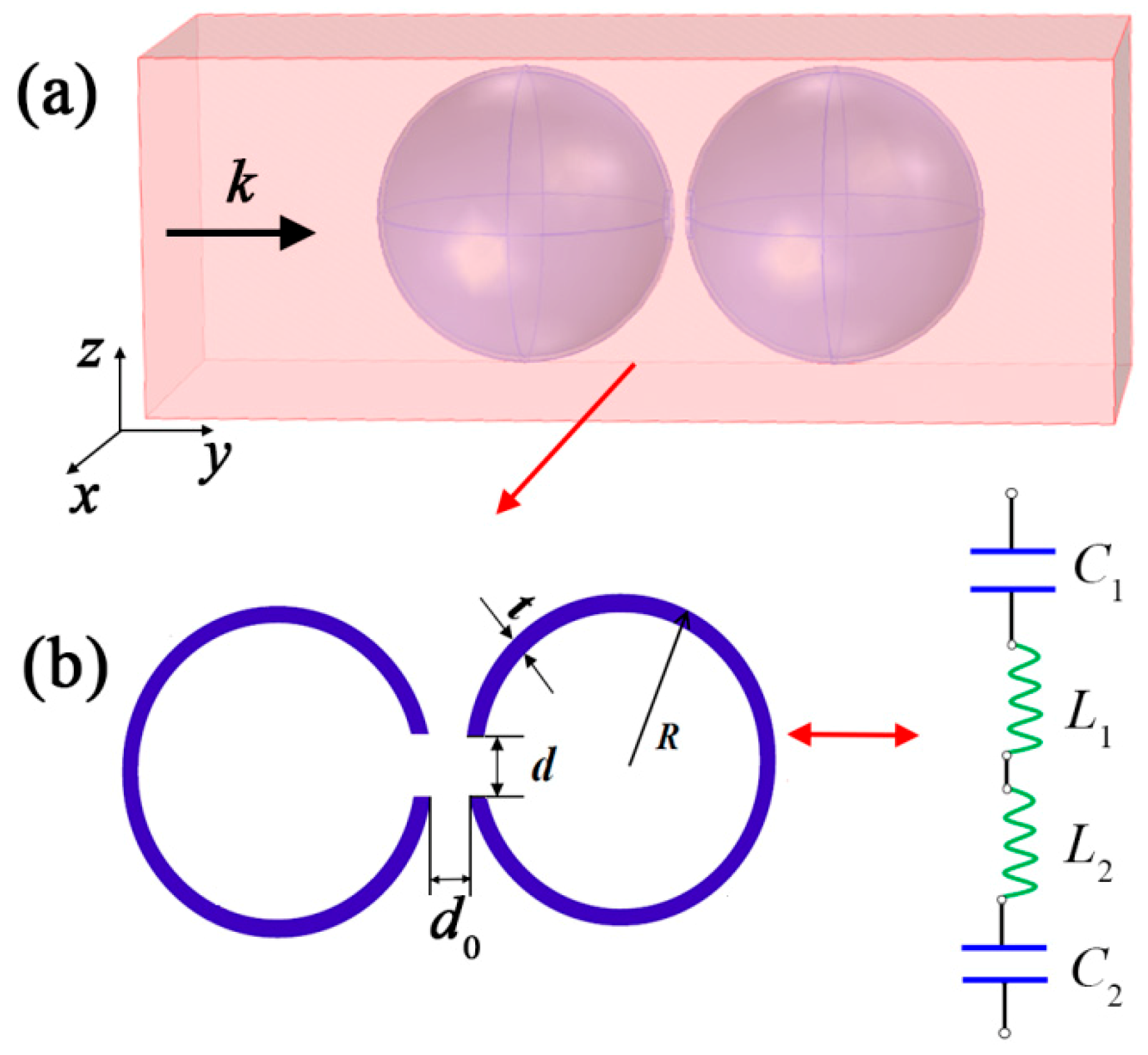
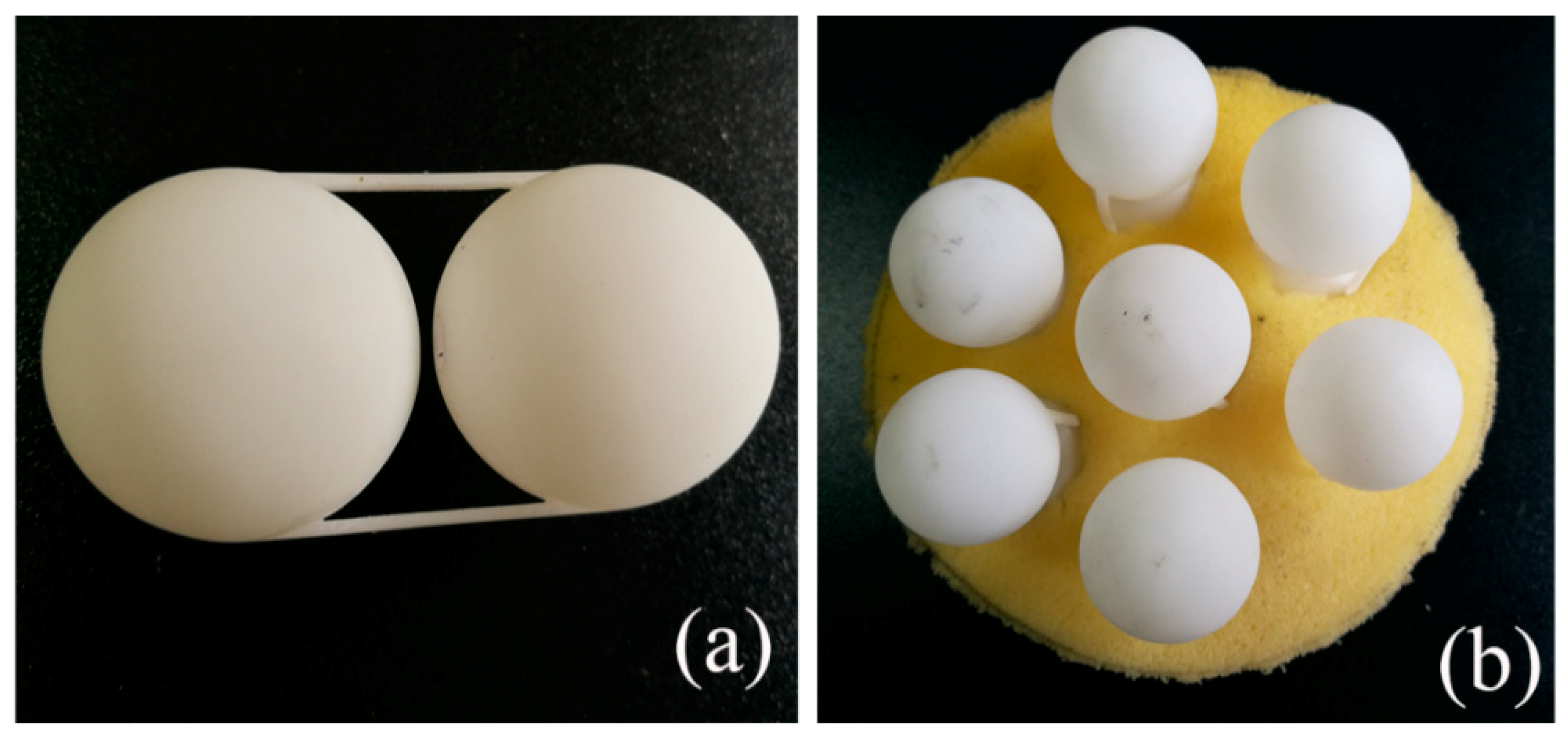
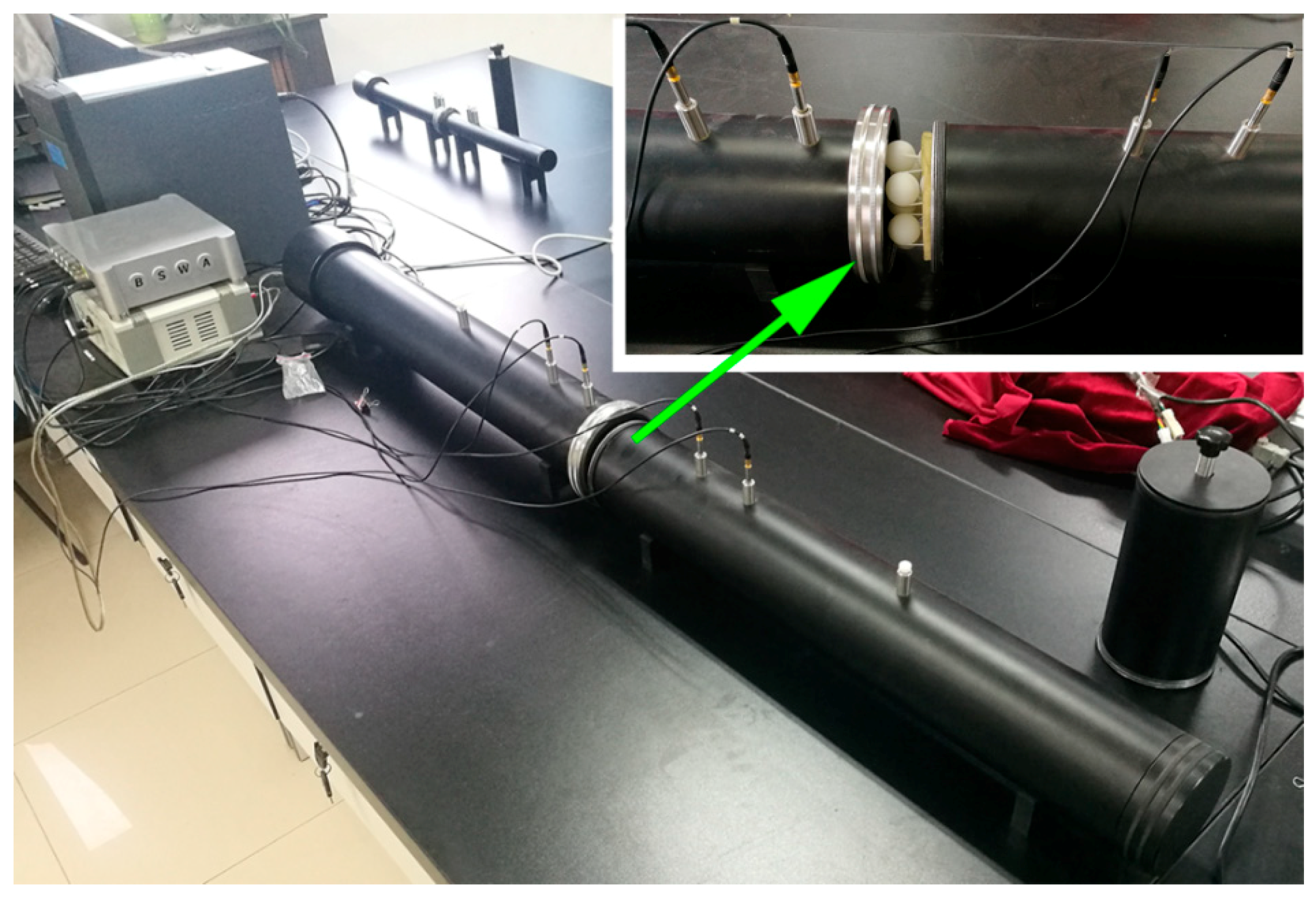
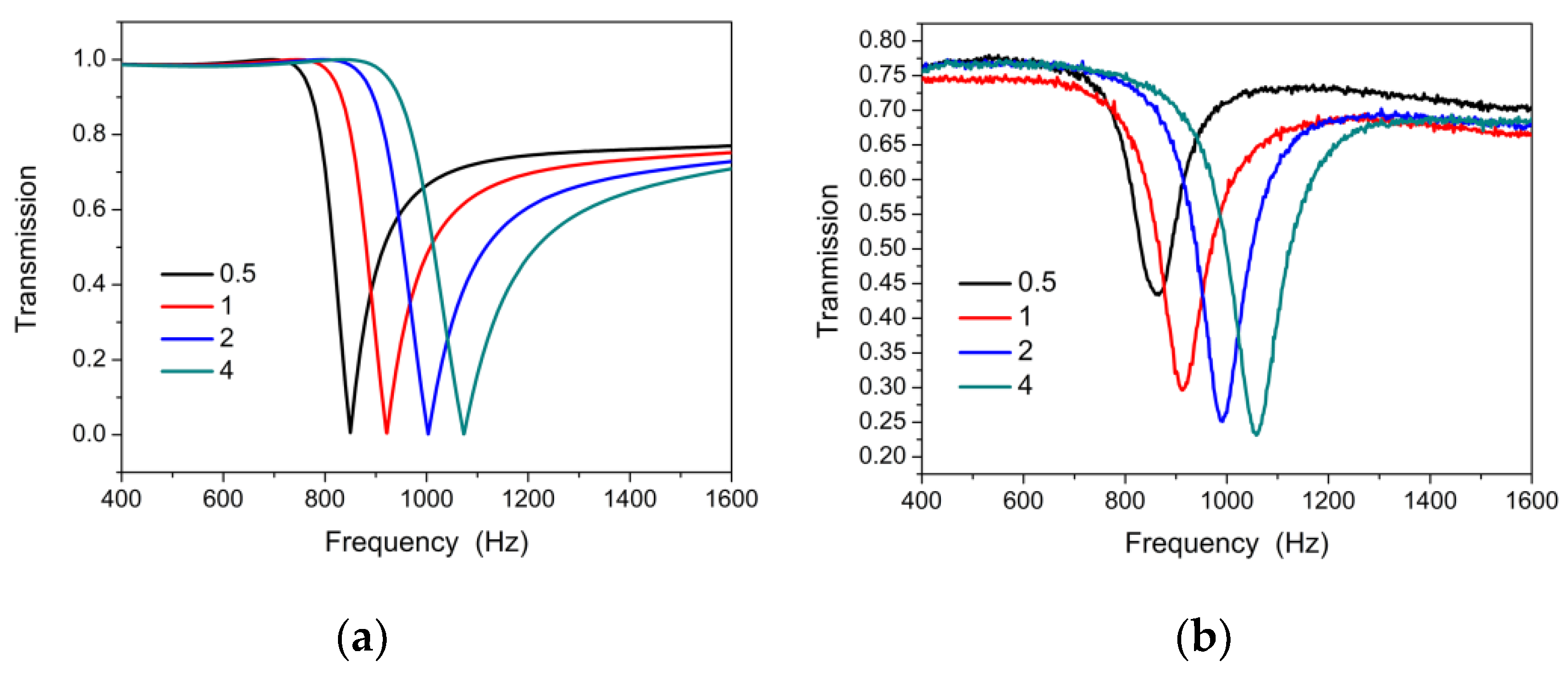
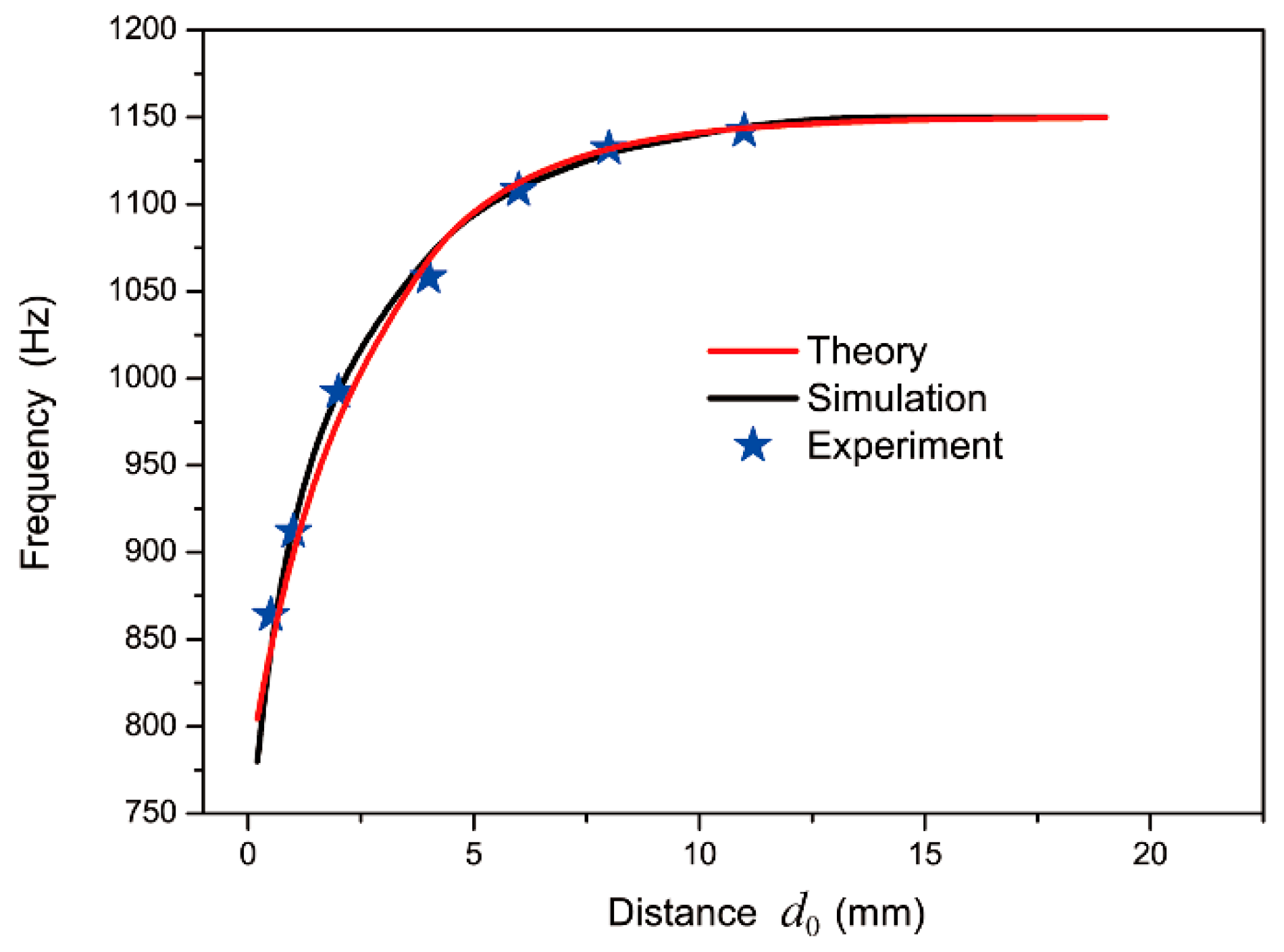
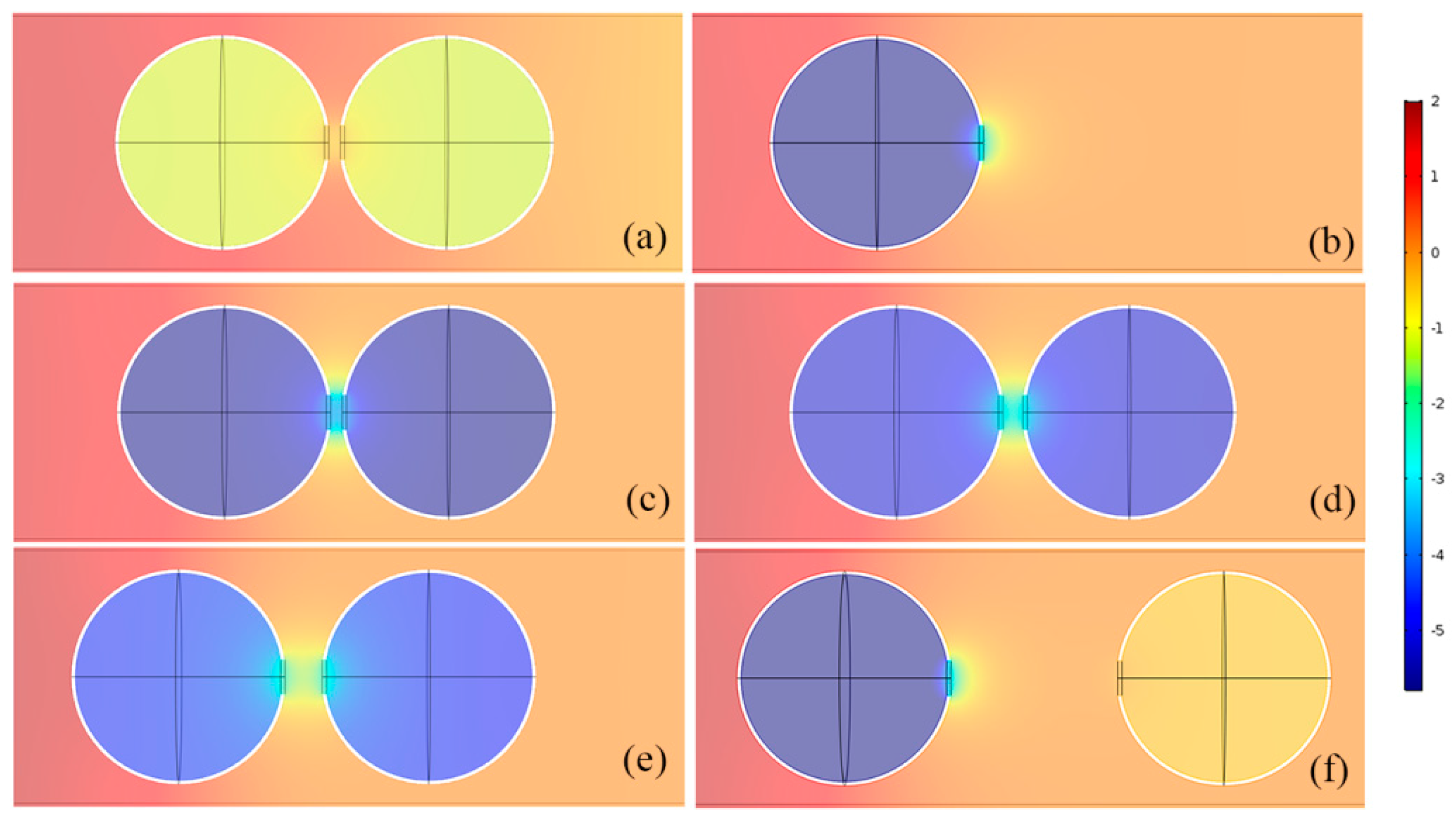
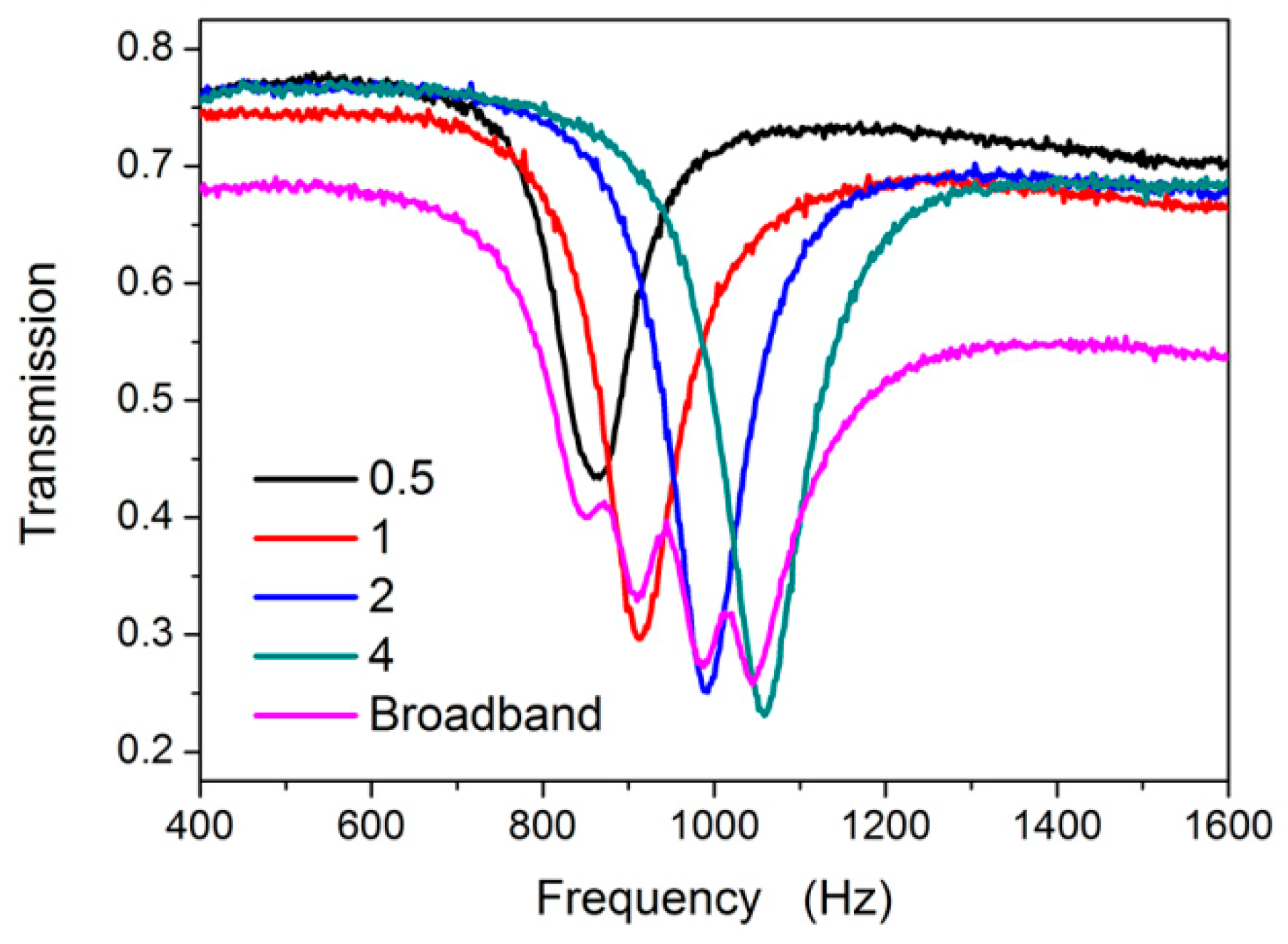
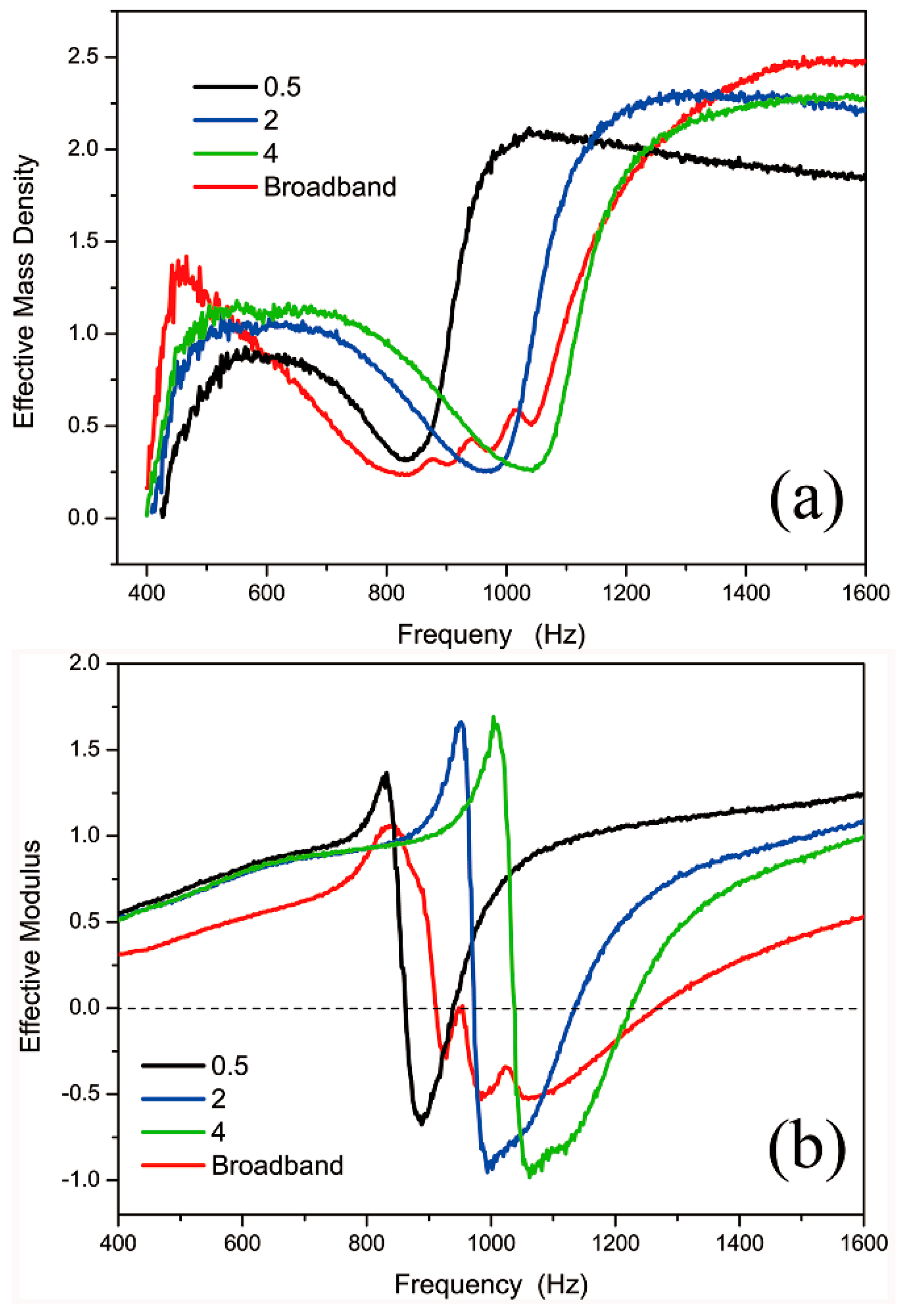
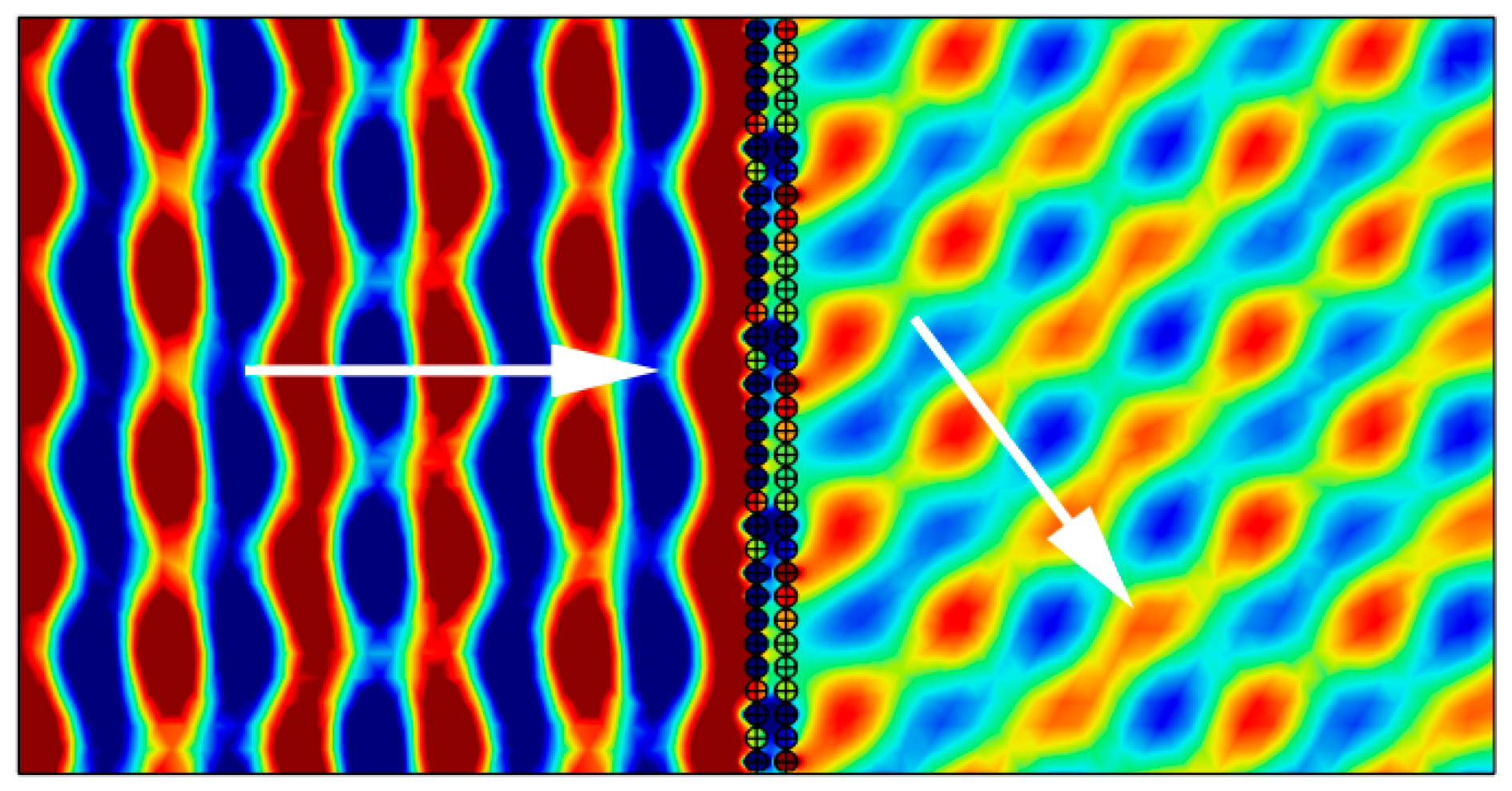
© 2019 by the authors. Licensee MDPI, Basel, Switzerland. This article is an open access article distributed under the terms and conditions of the Creative Commons Attribution (CC BY) license (http://creativecommons.org/licenses/by/4.0/).
Share and Cite
Ding, C.; Dong, Y.; Song, K.; Zhai, S.; Wang, Y.; Zhao, X. Mutual Inductance and Coupling Effects in Acoustic Resonant Unit Cells. Materials 2019, 12, 1558. https://doi.org/10.3390/ma12091558
Ding C, Dong Y, Song K, Zhai S, Wang Y, Zhao X. Mutual Inductance and Coupling Effects in Acoustic Resonant Unit Cells. Materials. 2019; 12(9):1558. https://doi.org/10.3390/ma12091558
Chicago/Turabian StyleDing, Changlin, Yibao Dong, Kun Song, Shilong Zhai, Yuanbo Wang, and Xiaopeng Zhao. 2019. "Mutual Inductance and Coupling Effects in Acoustic Resonant Unit Cells" Materials 12, no. 9: 1558. https://doi.org/10.3390/ma12091558
APA StyleDing, C., Dong, Y., Song, K., Zhai, S., Wang, Y., & Zhao, X. (2019). Mutual Inductance and Coupling Effects in Acoustic Resonant Unit Cells. Materials, 12(9), 1558. https://doi.org/10.3390/ma12091558





